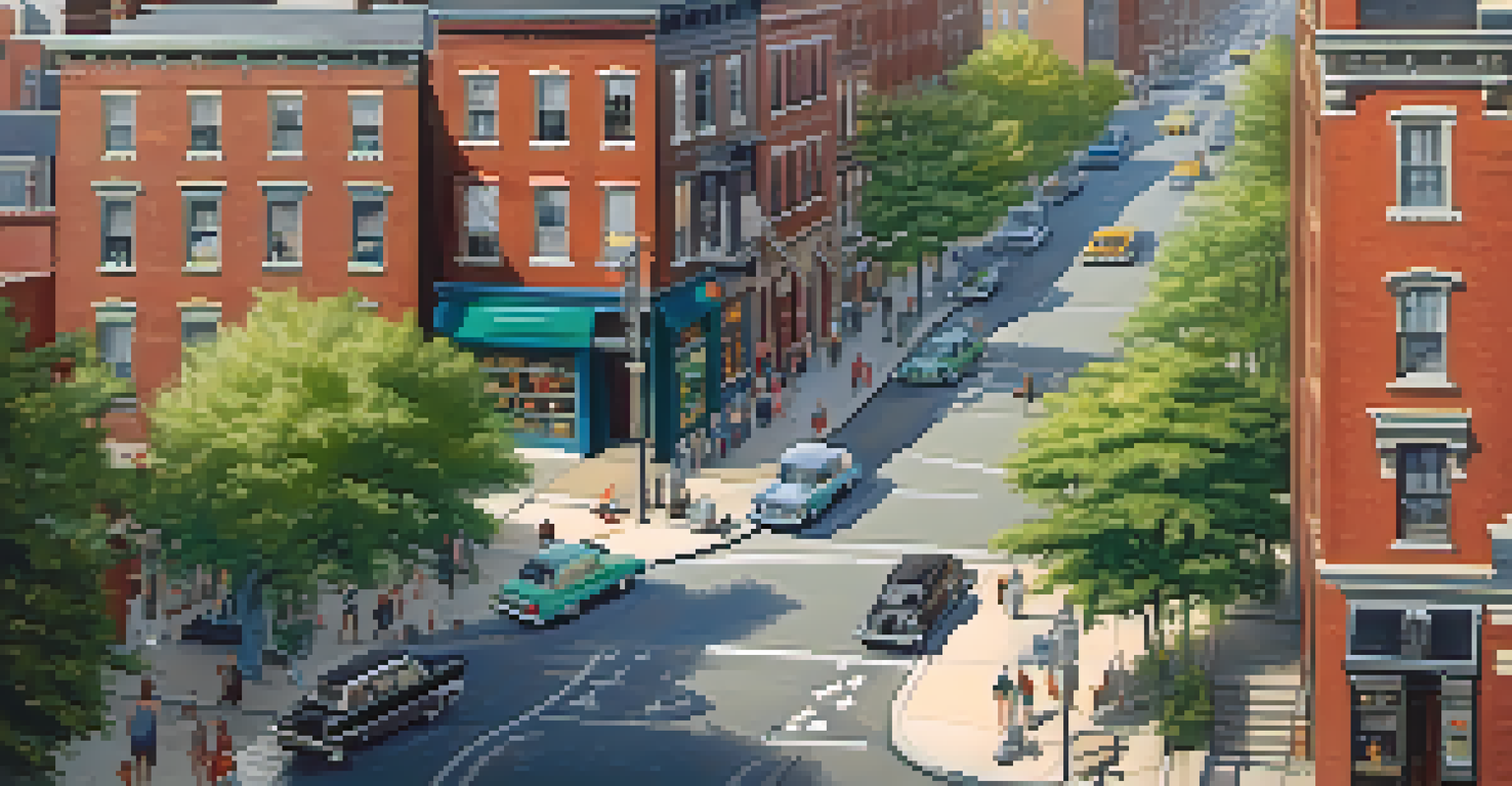Historic Preservation Laws and Their Impact on NYC Heritage

Understanding Historic Preservation in NYC
Historic preservation in New York City is all about protecting the architectural and cultural legacy that defines this vibrant metropolis. It encompasses a variety of laws and regulations aimed at maintaining historic landmarks, neighborhoods, and structures. The primary goal is to ensure that future generations can appreciate and learn from the city’s rich history.
Preservation is a direct reflection of the values of a community. It’s about honoring the past while creating a dialogue for the future.
Since the late 1960s, preservation efforts have significantly shaped NYC’s skyline, allowing for both conservation and development. The Landmarks Preservation Commission (LPC) plays a crucial role, designating landmarks and historic districts that help safeguard the city’s unique character. This balance between modern growth and historical integrity is essential for maintaining the city's identity.
In essence, historic preservation is not just about saving old buildings; it's about maintaining a sense of place and community continuity. By protecting these sites, NYC fosters a connection between its residents and their shared past, enhancing the overall quality of life.
Key Legislation Supporting Preservation Efforts
Several key pieces of legislation have been instrumental in shaping historic preservation in NYC. The most notable is the Landmarks Law of 1965, which established the framework for identifying and protecting significant structures. This law empowered the LPC to designate landmarks and historic districts, ensuring that changes to these sites are carefully considered.

Another significant legislative measure is the National Historic Preservation Act of 1966, which encourages states and communities to preserve their historical and archaeological resources. This federal law complements local efforts by providing funding and support for preservation projects. Together, these laws create a robust network for protecting New York’s cultural heritage.
Preservation Protects NYC's Identity
Historic preservation in NYC safeguards architectural and cultural heritage, ensuring that future generations can connect with the city's rich history.
As a result, these laws not only preserve the physical structures but also promote an understanding of their historical context. The legal framework ensures that preservation is a community-focused effort, engaging residents and stakeholders in discussions about the future of their neighborhoods.
The Role of the Landmarks Preservation Commission
The Landmarks Preservation Commission (LPC) acts as the guardian of New York City's historic sites. With a mission to preserve the city's architectural heritage, the LPC reviews proposed changes to designated landmarks and districts. This review process helps to maintain the character of neighborhoods while allowing for necessary updates and renovations.
Historic preservation is not just about saving old buildings; it’s about preserving the stories they tell and the lives they represent.
In addition to reviewing applications, the LPC also conducts educational outreach to inform the public about the importance of preservation. By raising awareness, the commission fosters a sense of pride among New Yorkers regarding their city's history. This engagement is crucial for garnering public support for preservation efforts.
Furthermore, the LPC’s decisions can have far-reaching impacts on local communities. By prioritizing preservation, the commission influences urban planning and development, ensuring that new projects complement rather than clash with the historical fabric of the city.
Impact on Neighborhood Development and Gentrification
Historic preservation laws significantly influence neighborhood development in New York City. While they aim to protect cultural heritage, they can also complicate the gentrification process. In many cases, preservation efforts can increase property values, attracting developers and wealthier residents, which may displace long-time locals.
The challenge lies in finding a balance between preserving history and accommodating growth. Some neighborhoods have successfully navigated this tension by integrating affordable housing initiatives with preservation efforts. By doing so, they ensure that the community remains inclusive while still honoring its historical roots.
Legislation Supports Preservation
Key laws like the Landmarks Law of 1965 empower the Landmarks Preservation Commission to protect significant structures and engage communities in preservation efforts.
Ultimately, the dialogue between preservationists and developers is essential. Collaborative efforts can lead to thoughtful urban design that respects the past while embracing the future, creating vibrant neighborhoods that are both historically rich and economically viable.
Case Studies of Successful Preservation
Numerous case studies illustrate the positive impact of historic preservation in NYC. One notable example is the restoration of the Grand Central Terminal, a celebrated landmark that faced potential demolition in the 1970s. Thanks to preservation efforts, it remains a bustling hub of activity, showcasing both its architectural beauty and historical significance.
Another success story is the preservation of the West Village, which has become a model for protecting historic neighborhoods. Designation as a historic district has helped maintain the area’s unique character, preventing the loss of its charming brownstones and boutique shops. This preservation ensures the community's identity endures amidst changing times.
These examples demonstrate that preservation can enhance both cultural heritage and economic vitality. By investing in and protecting historic sites, NYC not only retains its unique character but also attracts tourism and fosters local businesses.
Challenges Facing Historic Preservation Today
Despite the successes, historic preservation in NYC faces significant challenges. One major issue is the ongoing pressure from developers who seek to capitalize on prime real estate. The tension between preserving historical sites and accommodating new construction often leads to conflicts within communities, sparking debates about the future of the city.
Additionally, funding for preservation projects can be limited, making it difficult to maintain and restore aging structures. Many historic sites require substantial investment to meet modern safety and accessibility standards, which can be a barrier to preservation efforts. This financial strain often forces communities to make tough decisions about which sites to prioritize.
Balancing Growth and Heritage
While historic preservation can raise property values and attract developers, finding an equilibrium between development and maintaining community character is essential.
Moreover, public awareness about the importance of preservation is not universal. Efforts to engage diverse communities and educate them about the value of their local heritage are vital. Ensuring that all voices are heard in the preservation conversation is essential for a truly inclusive approach to maintaining NYC's rich history.
The Future of Historic Preservation in NYC
Looking ahead, the future of historic preservation in NYC hinges on adaptability and innovation. As the city continues to evolve, preservationists must find creative solutions to balance modernization with historical integrity. This could involve leveraging technology to document and protect sites, ensuring they remain relevant in a changing urban landscape.
Community engagement will also play a pivotal role in shaping preservation efforts. By fostering inclusive conversations that involve diverse stakeholders, NYC can create preservation strategies that reflect the values and needs of its residents. This collaborative approach will help build a sense of ownership and pride in local heritage.

Ultimately, the future of historic preservation in NYC is about striking a balance. By embracing both history and progress, the city can ensure that its rich cultural tapestry remains vibrant and accessible for generations to come.